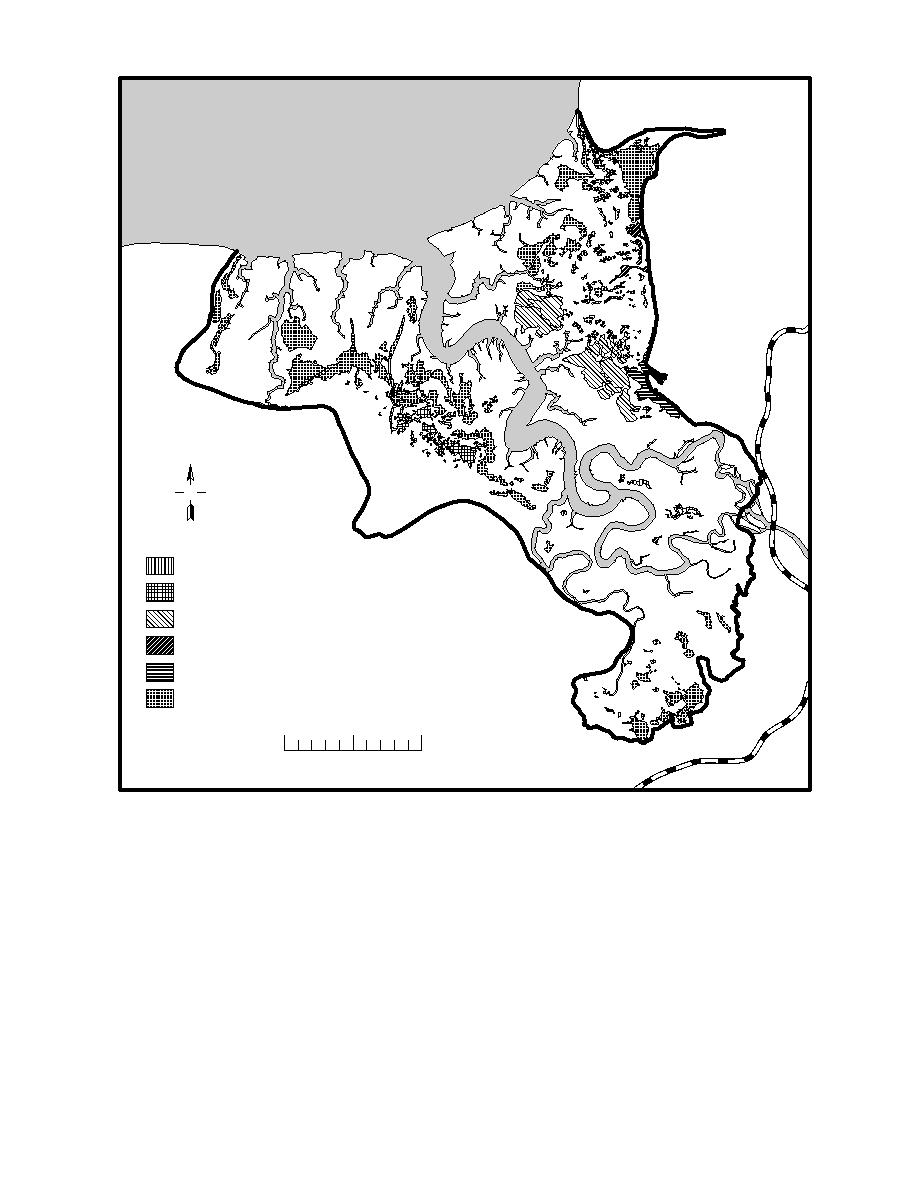
N
Drraiagagnd anntaiCoentainment
N ain n e a e Co d nm nt
D
Naturur/an/hanchd Seded ntaeonimenuaaion and Burial
N at al El En e anc ime S ti d and Bt ri tl
N at al G ly u l in Dr ai d I e n e ua on
Co mb ion if n u Se t m a ti n a me a ag o
o
PP Rememloval
W P R ova
Ponns s
o dd
0
500
50 0
10000 m
10 0 m
0
Figure 55. Recommendations for site remediation.
These areas in Knik Arm are therefore sites
or other receptors. Repeated bathymetric profil-
where samples of sediment should be examined
ing could also define net rates of sedimentation
for WP. They include two intertidal bars, a bar at
or erosion in Knik Arm.
the mouth of the Eagle River, and nearshore
zones north and south of the Eagle River (Fig.
54). Because they are periodically exposed, these
CONCLUSIONS AND
sites may be locations where receptors can find
RECOMMENDATIONS
WP. Further analyses are required to evaluate
whether WP is being preserved in these deposits,
Conclusions
and, further, whether the dynamics of Knik Arm
The results of the 1995 and previous years'
can cause potential exposure of WP to waterfowl
investigations lead to several important conclusions:
62



 Previous Page
Previous Page
